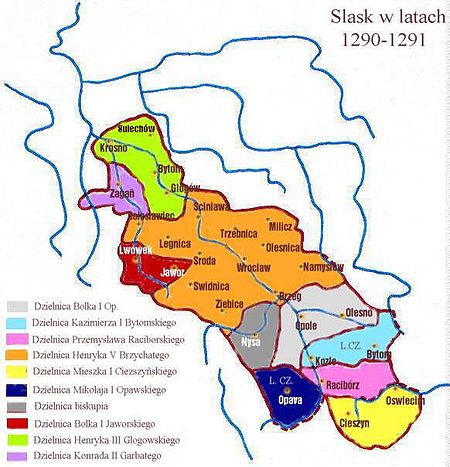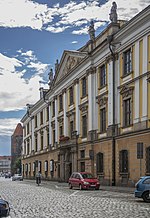Duchy of Legnica
13th-century establishments in PolandDuchies of SilesiaStates and territories established in 1248

The Duchy of Legnica (Polish: Księstwo Legnickie, Czech: Lehnické knížectví) or Duchy of Liegnitz (German: Herzogtum Liegnitz) was one of the Duchies of Silesia. Its capital was Legnica (Liegnitz) in Lower Silesia. Legnica Castle had become a residence of the Silesian dukes in 1163 and from 1248 was the seat of a principality in its own right, ruled by the Silesian branch of the Piast dynasty until the extinction of the line in 1675. Formed by Bolesław II the Bald, Duke of Lower Silesia at Wrocław, Legnica shared the fate of most of the others Silesian duchies, falling into Bohemian, Austrian and eventually—after the First Silesian War—Prussian spheres of influence.
Excerpt from the Wikipedia article Duchy of Legnica (License: CC BY-SA 3.0, Authors, Images).Duchy of Legnica
Rynek, Legnica
Geographical coordinates (GPS) Address Nearby Places Show on map
Geographical coordinates (GPS)
| Latitude | Longitude |
|---|---|
| N 51.208333 ° | E 16.160278 ° |
Address
Rynek 34
59-220 Legnica
Lower Silesian Voivodeship, Poland
Open on Google Maps











